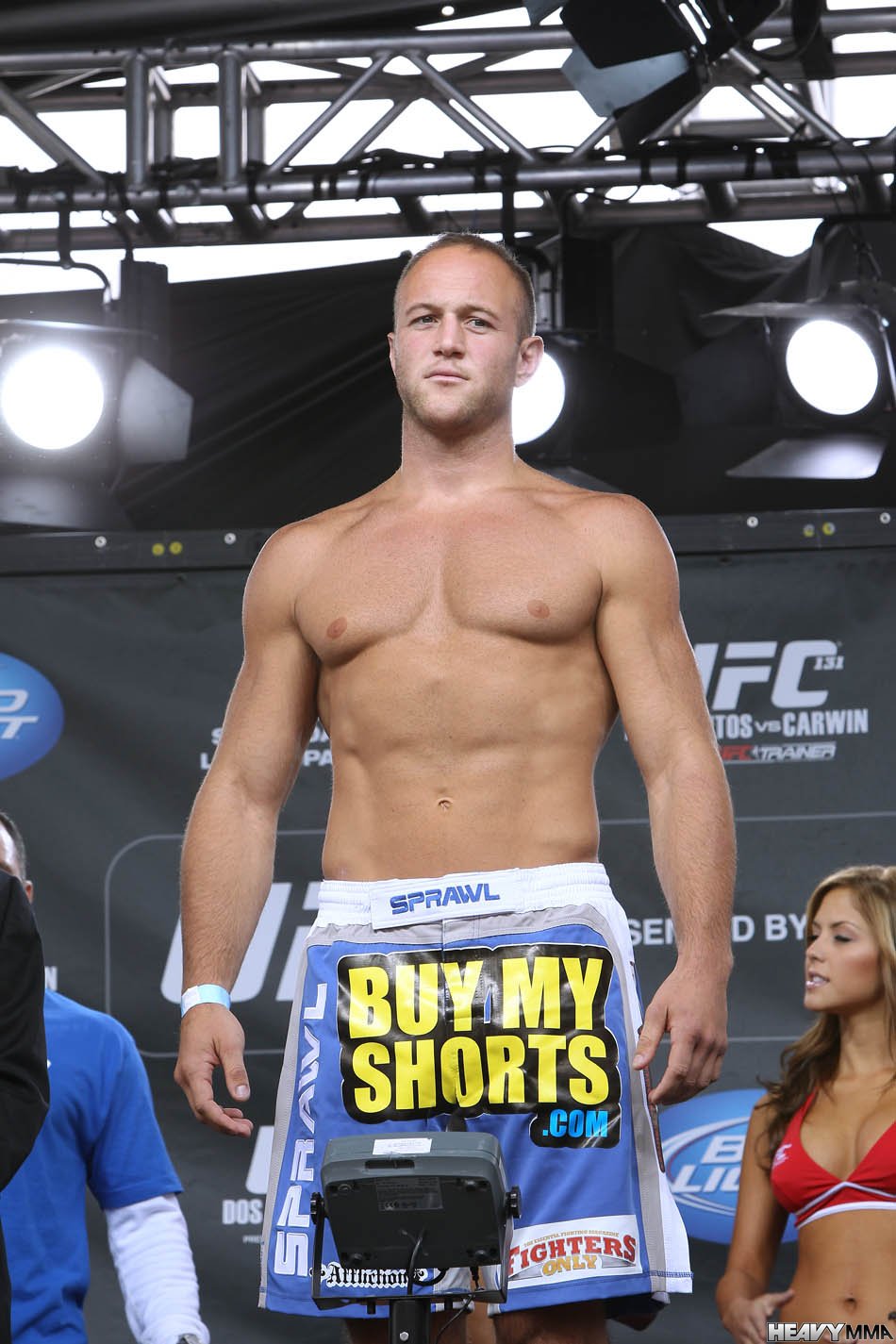 From Royce Gracie to GSP and beyond, MMA continues to evolve
From Royce Gracie to GSP and beyond, MMA continues to evolve
“I honestly really don’t think Brazilian jiu-jitsu works. If you have any knowledge at all of jiu-jitsu, it’s just not going to work. If you literally have never heard of anything and have no idea what they’re doing, OK, kind of like the first UFC, yeah jiu-jitsu works.”
Those are the explosive comments of UFC heavyweight Dave “Pee-Wee” Herman shortly after emerging from UFC 131 with a win. In Vancouver, Herman defeated Jon Olav Einemo, a high level, respected grappler and the only man to defeat Roger Gracie in ADCC competition.
Herman went on to qualify his analysis later in the same stream-of-consciousness comment, amending the original broad thought to a more nuanced focus: “Maybe I should re-phrase it and just say jiu-jitsu doesn’t work on me.”
Whether or not you agree with his analysis is irrelevant. There are no absolute right or wrong answers here, and you could make a reasonable case either way. What is relevant and much more interesting is the larger topic that lies beneath the surface of his original statement.
The word evolution gets used a great deal in this sport. It’s the verb of choice when describing the growth from the early days of the UFC and the no-holds-barred action that was outlawed to the sanctioned and regulated sport we have today.
The development of an athlete’s skills, the improvement at individual disciplines and strengthening weaknesses shows their “evolution as a fighter.” Herman is talking about evolution.
So am I.
Like it or not – and it certainly sounds silly on the surface – there is merit to what he said. Brazilian jiu-jitsu still works, and we see examples every week of the art being used to finish fights.
The kernel of truth in the popcorn bowl of analysis from Herman is his reference to the first UFC. When you compare those early UFC events to the action in the Octagon today, Herman’s statement has legs. Fighters at the elite level are no longer caught completely off guard by armbar attempts, triangle chokes, and high level jiu-jitsu players pulling guard to get the fight into their comfort zone.
But it’s not because jiu-jitsu doesn’t work; it’s because the sport and the fighters have evolved.
Expertise in and complete reliance on an individual discipline was sufficient in the Halycon days of Royce Gracie. Today, that one-dimensional approach doesn’t work all that well. That’s Herman is saying, albeit in an inarticulate way.
If a current UFC fighter jumped in Doc Brown’s DeLorean and went back to McNichols Arena on November 12, 1993, Gracie would be in trouble. Anyone who doesn’t think the 170-something pound Brazilian would be in a bad way giving up twenty or thirty pounds against fighters from today is kidding themselves.
No one in the UFC today is tapping simply because they are mounted, and most middleweights would give Gracie difficulty. The Brazilian would definitely struggle against middle-of-the-pack light heavyweights, and he’d be in real trouble the further he moved up the ladder.
While there are still skilled jiu-jitsu stylists earning submission wins throughout the sport, there are also elite talents like Demian Maia and Jake Shields who have gone more than two years without submitting an opponent. It’s not that their skills have eroded or that Brazilian jiu-jitsu has become as useful as a floppy disk; fighters just know what to expect with the high level BJJ black belts, and actively work to avoid being submitted. Try as they may, both Maia and Shields – and countless others who count jiu-jitsu as their primary discipline — are being forced to develop their secondary talents in order to keep winning fights.
Jiu-jitsu players are not alone in this development. Nobody can be one-dimensional.
Gracie was the face of the early UFC era. Fighters like Matt Hughes and Tito Ortiz represent the days when one-dimensional dominance and solid secondary skills could make you a champion. Today, Georges St-Pierre stands emblematic of the most recent evolution to envelop the sport.
How do you solve a problem like GSP? He’s a riddle wrapped in an enigma wrapped in vale tudo shorts. At least part of him is.
If you stand with him, he can jab your orbital bone beyond repair. If your ground game is weak, he’ll wrestle you to death or take you down and work for submissions. He’ll even beat you with one eye.
St-Pierre developed his all-encompassing awesomeness from a Kyokushin karate base, adding boxing, jiu-jitsu and wrestling along the way. He’s the exception to the norm though; a tremendous talent who was able to breeze through the jack-of-all-trades, master-of-none phase and emerge as a dominant, well-rounded force.
His success cast a spotlight on the need to be skilled across all disciplines. Now, skills are developed in all elements in the formative stages. Hopefuls who once picked up individual abilities at a variety of gyms now learn mixed martial arts in total. They build their wrestling, boxing, jiu-jitsu, and kickboxing under one roof and at the same time.
Fighters like fellow Canadian welterweight Rory MacDonald and bantamweight prospect Michael McDonald are two of the first fighters to emerge inside the Octagon after beginning their training this way. They don’t come from a wrestling or karate or jiu-jitsu background; they’ve only ever trained MMA in its totality. Their rapid ascension through their respective weight classes shows the system has significant merits.
Comments
Like It Or Not, Mixed Martial Arts Continues To Evolve